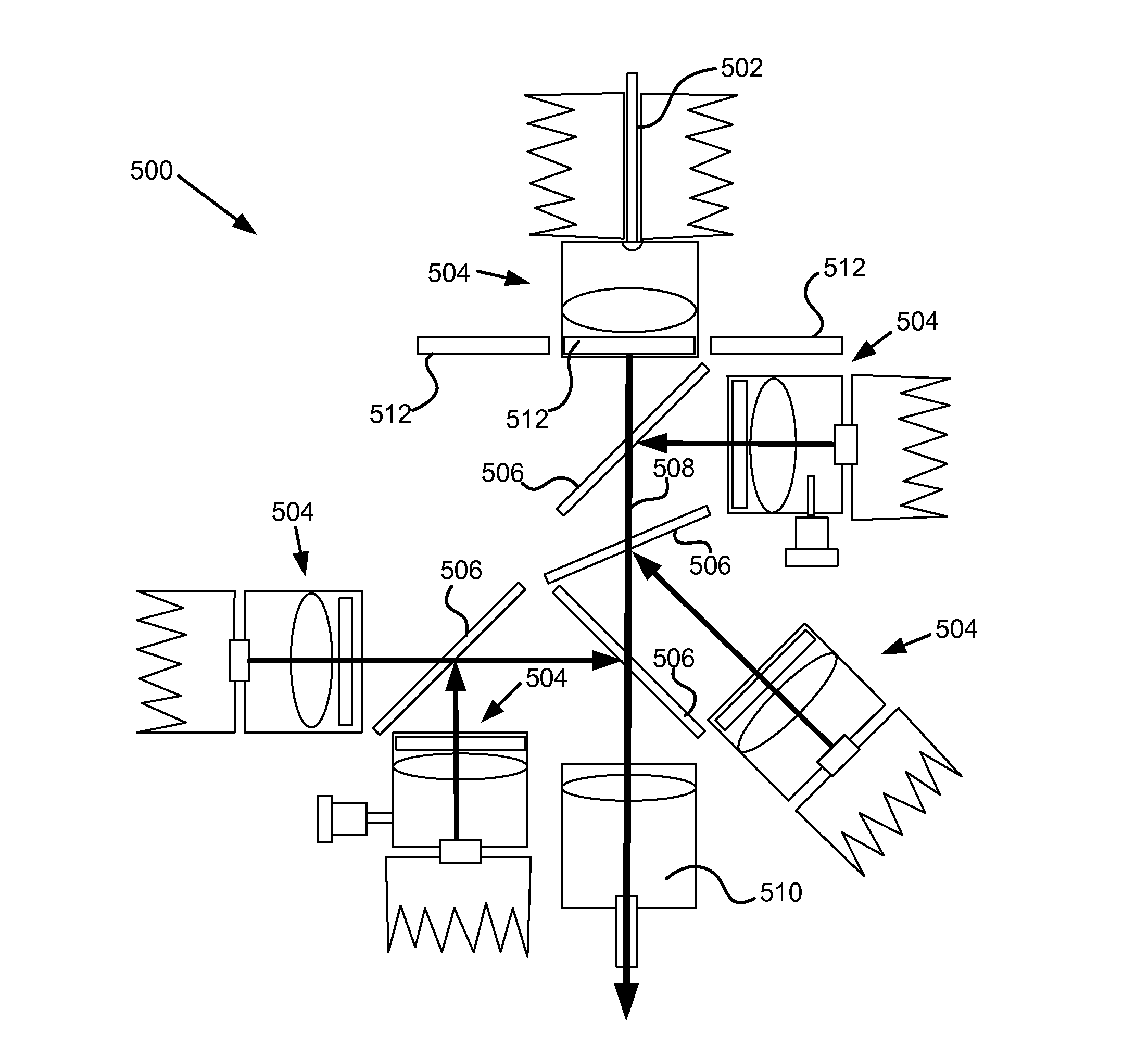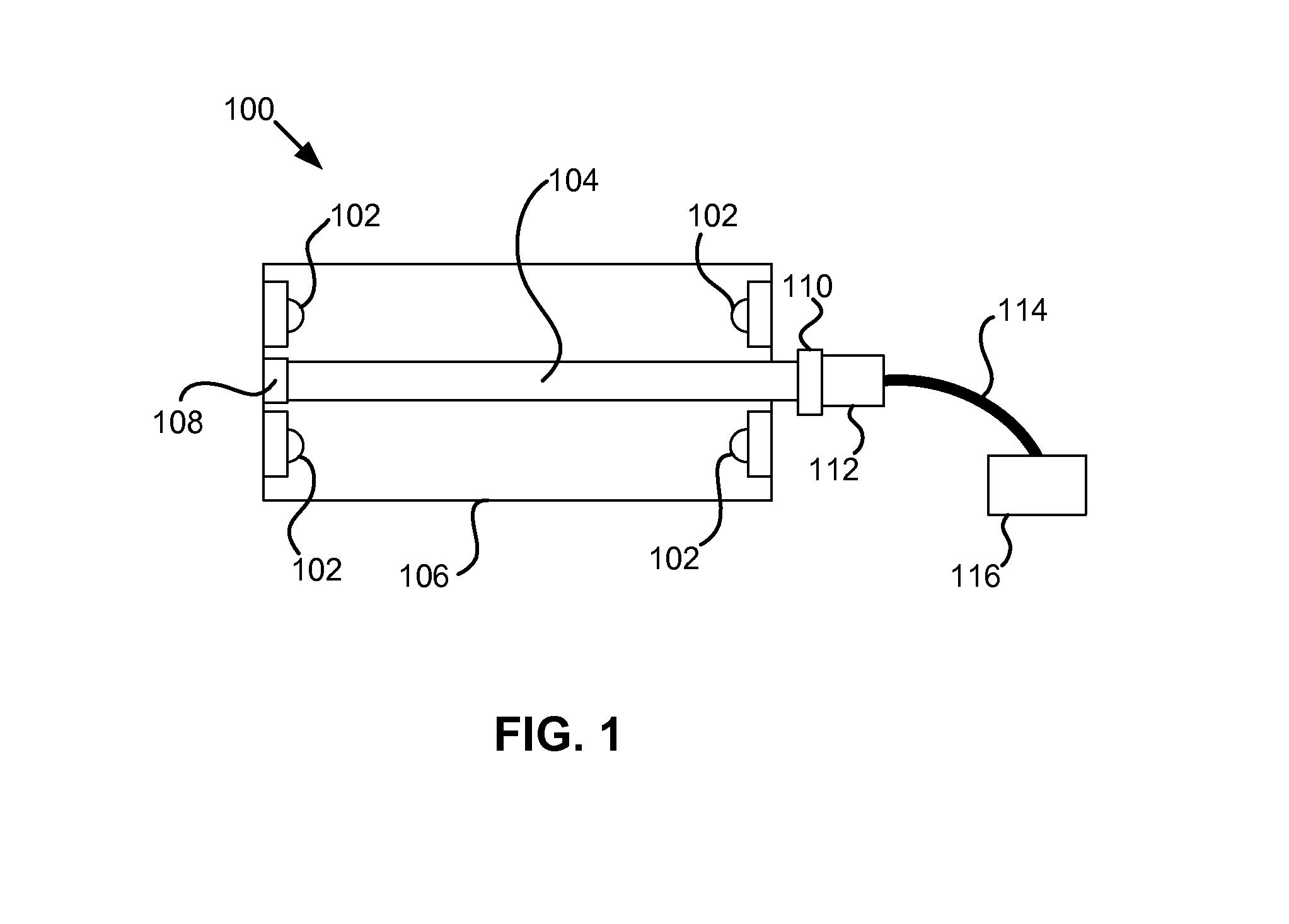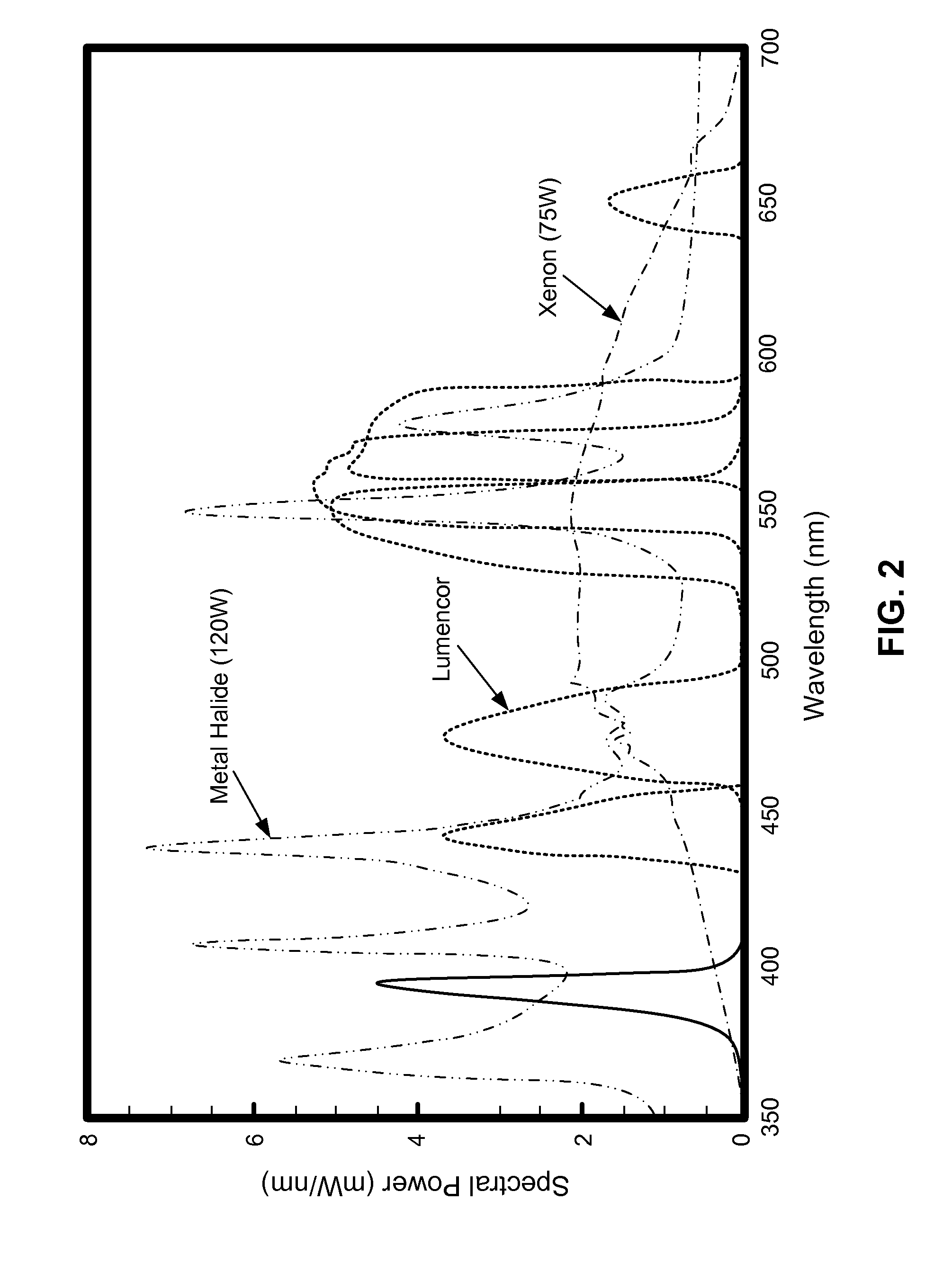Solid state light source with hybrid optical and electrical intensity control
a hybrid optical and electrical intensity control technology, applied in the field of solid-state light sources for microscopy and fluorescence microscopy, can solve the problems of low reliability, unsuitable portable analyzers, and low reliability, and achieve the effects of high reliability, high efficiency and commercial valu
- Summary
- Abstract
- Description
- Claims
- Application Information
AI Technical Summary
Benefits of technology
Problems solved by technology
Method used
Image
Examples
Embodiment Construction
[0033]While lighting manufacturers cannot provide all things to all applications, it is precisely this breadth of demand for which a light engine can be designed. To that end, products are not simple sources, but rather light engines: sources and all the ancillary components required to provide pure, powerful, light to the sample or as close to it as mechanically possible. Such designs have resulted in products that embody a flexible, hybrid solution to meet the needs of the broad array of applications for biotech. A qualitative comparison of light engine performance as a function of source technology is summarized in Table 1.
TABLE IA qualitative comparison of light engine performance as function of thesource technology employedSourceUseableUni-TemporalHeatDura-TechnologyLightformityResponseGenerationbilityCostArc LampmedpoornonehighlowhighLaserhighpoornonelowlowvery highLEDlowpoorfastlowhighmediumTungstenlowpoornonemediumlowmediumLight Pipehighhighfastlowhighlow
Light Pipe Engines
[0...
PUM
 Login to View More
Login to View More Abstract
Description
Claims
Application Information
 Login to View More
Login to View More - R&D
- Intellectual Property
- Life Sciences
- Materials
- Tech Scout
- Unparalleled Data Quality
- Higher Quality Content
- 60% Fewer Hallucinations
Browse by: Latest US Patents, China's latest patents, Technical Efficacy Thesaurus, Application Domain, Technology Topic, Popular Technical Reports.
© 2025 PatSnap. All rights reserved.Legal|Privacy policy|Modern Slavery Act Transparency Statement|Sitemap|About US| Contact US: help@patsnap.com



